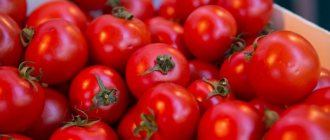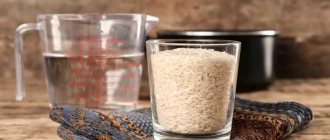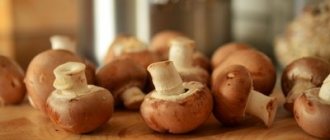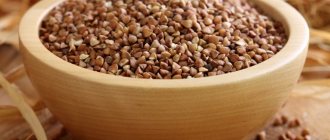Rice is a characteristic feature of the culture of Japan, Indonesia, India, and China. In Japan it replaces bread. It happens that the Japanese eat rice four times a day, including snacking on it. You rarely see fat people in Japan: out of 100 people, only three can be fat. Rice contains almost no salt, no saturated fat and no cholesterol. Does this mean that residents of countries whose diet is based on rice are “doomed” to be slim? Not at all.
In Chinese, the word “rice” has exactly the same meaning as the word “bread” in Russian. At the same time, over the past thirty years, the waist circumference of the male part of the Chinese population has been increasingly increasing. About 45 percent of the country's population is currently overweight. Scientists have noticed that an impressive group of fat people in China are representatives of the middle class.
Previously, the problem of overweight and obesity was prevalent only in high-income countries. According to statistics, in France 48.5 percent of adults are overweight, in the United States - 61 percent (especially in urban areas). Now this is also a problem in India and Indonesia.
What is the real reason for the growing problem of obesity in countries with an established culture of rice consumption? Maybe that's the problem? Can rice really make you fat? So why is it that in Japan only 3.7 percent of the population is considered to be at an unhealthy weight? Let's consider all these questions in detail. In this article we will figure out whether rice makes you fat.
What is rice?
This is a cereal crop characterized by a rich carbohydrate content (up to 70% in dry cereals) and a poor protein content (up to 12% in dry cereals). The composition does not contain gluten, a vegetable protein that causes allergic reactions. In total, more than twenty types of rice and more than one hundred varieties are known.
Rice is classified according to the method of grain processing:
- brown (brown, unpolished);
- white (polished);
- steamed.
Brown (brown, unpolished) does not contain fat-soluble vitamins. It contains only water-soluble vitamins B1, B2, B3 (PP), B5, B6, B9, as well as macro- and microelements (minerals). Brown rice is a grain that has retained its bran membrane, which means it retains its vitamins and nutrients. This is a product with a distinct taste and unique aroma.
White rice is highly processed rice. Compared to brown, it has few vitamins, minerals and a lot of starch. This rice is easy to prepare and affordable.
A few words about steamed rice. Thanks to steam treatment, it retains 80% more beneficial properties than simply polished or ground grains. The disadvantages of parboiled rice include increased starch content.
What is in rice
The composition of the cereal is varied. It contains 8 amino acids involved in the creation of new cells.
Cereals are rich in fiber and beneficial microelements:
- potassium;
- phosphorus;
- calcium;
- magnesium;
- sodium;
- iron;
- manganese;
- zinc;
- copper;
- selenium;
- B vitamins.
The main component of the product is carbohydrates. There are 100 gr of them. grains about 80 g. 7-8% are proteins. The rest: water, dietary fiber, fats, ash in small quantities.
Which cereal should you choose?
The choice of one rice or another depends on the purpose for which it is intended. In cooking, the choice determines the intended dish. Rice should be crumbly or elastic, viscous or sticky, aromatic or with a minimally pronounced odor. “Devzira” is ideal for Uzbek pilaf, “Valencia” for paella, “Arborio” for risotto, etc.
For the purpose of diet therapy, the beneficial properties of rice play a leading role when choosing. For example, low-calorie and very filling wild rice has a rich and balanced composition of minerals, fiber, vitamins and high protein content. However, it grows only in North America and has a very considerable price. Black (Tibetan) rice is considered an aphrodisiac. Thai red rice (“cargo”), currently grown in France, is known for its beneficial properties. This product contains a large amount of antioxidants that neutralize the harm of toxic substances and carcinogens. Which rice to choose to lose weight? How does cereal affect weight? Let's look further.
Soy sauce, characters, etc., etc.
Likewise, Japanese researchers might claim that Westerners need to consume more soy sauce to keep their weight down. After all, the region of rice consumption largely coincides with the so-called “umami taste zone,” which includes China, Japan, Korea and Southeast Asia. Umami is the fifth taste (in addition to sweet, sour, bitter and salty). It is caused by monosodium glutamate, a flavor enhancer formed during the fermentation of protein products: soy, small fish and seafood. In all these countries, food is richly flavored with such sauces, but the sauce itself also does nothing to help with weight loss.
Article on the topic
Constipation and swelling are guaranteed. Fasting days that are harmful to health Moreover, you can choose any symptom typical of these regions of Asia and declare that it promotes weight loss. It may not even have anything to do with nutrition. For example, the use of hieroglyphs for writing. There will definitely be a correlation between this trait and the lower weight of the population. But if Westerners switch to hieroglyphs (or rice), they will not become thinner. But if the Asian population switches to Western fast food, they will quickly gain weight. Which, in fact, is already happening. The Western diet has many features that contribute to the development of obesity: a large number of easily digestible carbohydrates, fats, calories, etc. And they all work together to increase body weight.
In the East, food is structured differently: here they eat a lot of vegetables, fruits, fish, few very fatty and very sweet foods, and food in general is little processed. All this protects against obesity. What about rice? Perhaps it is the most processed (refined) product in this part of Asia, and therefore is almost the only element in the diet that contributes to weight gain. This is such a paradox.
Rice diet: history and modern challenges
The rice diet owes its discovery to the German scientist Walter Kempner, who in 1939 proved its effectiveness for medical purposes.
In numerous studies, Kempner found that people whose diet is based on rice have the least common diseases such as hypertension and diabetes. Walter Kempner suggested that the rice diet could be an effective way to successfully prevent high blood pressure, lose weight and treat kidney problems. The results of the studies, which included more than 18 thousand participants, exceeded all expectations. Patients thanked the nutritionist for their excellent health and attractive appearance.
Since then, many diets have been developed. But it is precisely the transformation, the slender figure as a clear result of eating rice, that has led to the fact that nowadays the rice diet is resorted to mainly for weight loss.
Foods that affect fat deposition
Since childhood, many parents teach their children to drink tea with a sandwich in the morning, wash down food with cola or juice from a pack. Good behavior is rewarded with candy or other sweets. Poor nutrition is the leading cause of obesity in children and the development of gastrointestinal diseases. The second category is foods high in carbohydrates, the excess of which has a detrimental effect on your figure. High-calorie carbohydrate foods include:
- chocolate;
- glazed cheese curds;
- confectionery and all products containing flour and starch;
- ice cream;
- sugar and products containing sugar;
- fast foods;
- potatoes (only young potatoes, boiled or baked, are considered healthy);
- white polished rice;
- instant porridges and ready-made muesli;
- prepared fruit juices;
- alcohol.
High-calorie foods are prohibited by nutritionists. These are the foods that make you fat in a short time. You went on a diet, but couldn’t restrain yourself and ate a portion of your favorite chips, pizza or cake. You lost 2 kg in a week, and gained it back in a day. Therefore, it is important to monitor your diet and consume high-calorie foods in moderation, no more than 200 calories.
The "dark" side of the rice diet
Modern nutritionists recommend treating a diet chosen for the purpose of losing weight with caution and warn that:
- rice, when consumed in excess, removes from the body not only harmful salts, but also potassium, which ensures the functioning of the heart;
- increased fiber content against the background of impaired water balance can lead to constipation;
- a strict rice diet excludes the intake of proteins, fats and carbohydrates in the required proportions.
It is advisable to make the decision to switch to a rice diet after consulting with your doctor. Rice should not be consumed in significant quantities by people suffering from cardiovascular diseases, kidney failure, pathologies of the gastrointestinal tract, those who have had colds, as well as pregnant and lactating women.
Rice for weight loss
Opinions about the benefits of rice for weight loss are based on its richness in fiber. Fiber is a simple carbohydrate that is completely dissolved in the body during the digestion of food, without being stored in fat. It speeds up metabolism, removes excess fluid and salts from the body.
The energy required to digest grain is taken from fat deposits, and cleansing promotes weight loss. Protein in cereals is used as a building material for muscles. And the greater the muscle mass, the more intensely the fat layer is burned.
In 100 gr. dry grain contains 360 kcal, boiled rice has less of them - about 115. This applies to white cereals. The energy intensity of brown is even lower. The low calorie content of the product allows it to be used as a dietary food. After all, a calorie deficit is the basis for burning fat.
Types of rice diets for weight loss
Such a diet can be designed for three, five, seven or more days. You need to lose weight gradually, but efficiently. Therefore, the choice of diet determines a lot:
- The protein-rice diet is designed for five days. Breakfast - 250 grams of boiled rice, after lunch - 300 grams of seafood.
- Buckwheat-rice diet. It lasts three to five days. Breakfast and dinner - vegetables, during the day - boiled buckwheat and rice. One of the best options for those who plan to lose weight.
- "Black" diet. Five to seven days. Three to four servings per day. 250 grams of brown and 30 grams of black or wild rice.
- "A week." Lasts seven days. Boiled rice and vegetables, fruits as an exception.
- "Strict." Two or three days. One glass of boiled rice per day. Plus a green apple or freshly squeezed apple juice.
The most popular rice diets
There are many rice-based diets. Many eminent nutritionists include “rice” days in their proprietary nutritional methods for weight loss.
All of them involve the consumption of unrefined grains without salt, sugar, spices, boiled in water.
This diet should be followed for no more than a week:
- Breakfast: 2 tbsp. spoons of boiled rice. The cereal is soaked in the evening, washed thoroughly in the morning and slightly undercooked.
- Lunch: in 4 hours. Includes low-carbohydrate foods: steamed or boiled vegetables, lean boiled meat in small quantities.
- Dinner: 2 tbsp. spoons of boiled rice.
The diet is designed for 5 days:
- Breakfast: a handful of boiled rice.
- Lunch is skipped.
- Dinner: boiled fish fillet without oil and salt.
This diet should be followed for 7 days:
- You are allowed to eat rice with vegetables three times a day.
- In this case, there should be less cereals than vegetables.
- It is acceptable to add soy sauce and olive oil.
Nine-day diet:
Rice mono diet:
- You are only allowed to eat a glass of rice per day. When cooked, its volume will increase significantly.
- It is recommended to use it as a deload for no longer than three days in a row.
- To compensate for nutritional deficiencies, vitamin complexes must be taken during the diet.
Rice "reefs"
Do boiled rice make you fat? Eating grains on water definitely doesn’t make you fat. Especially if unprocessed cereals are chosen for weight loss, and they are prepared without adding salt and spices. When rice is cooked, the number of calories in it is significantly reduced. A portion of 150 grams per day is safe for your figure.
Does boiled rice in water make you fat if you eat the product for dinner? Since this is a carbohydrate product, it is better to eat it in the morning, for breakfast or lunch.
What foods are recommended to avoid?
Despite all the benefits of the product, diets based on it are not allowed in the following cases:
- anemia;
- obesity;
- ulcer;
- pancreatitis;
- gout;
- decreased sexual function in men;
- diabetes;
- pregnancy and lactation.
Is it possible to gain weight from rice? Whether people get fat or lose weight from rice depends on the approach to the diet as a whole - systematicity, selection of the type of product and its intake. The most popular is brown or brown rice. Its advantages are the absence of harm to health and the feeling of hunger, which is often the reason for the failure of losing weight and the nullification of all previous efforts.
- Before use, rice is washed and dried;
- The product becomes dietary when boiled in water without salt and spices;
- the most useful rice is one that swells overnight (to do this, it is filled with water at room temperature);
- use the method of simmering in the oven or steaming until half cooked;
- Rice will also be useful if you add bran;
- fats (butter and sunflower oil) are not used.
https://www.youtube.com/watch?v=
How to lose weight correctly. Nutritionists point out another feature of rice: when exposed to high temperatures, it loses its beneficial substances. Therefore, a more acceptable cooking method is to heat (without boiling) rice that has already swollen in water.
- If rice porridge is the main or only ingredient of the diet, it should be consumed in the first half of the day (slow carbohydrates settle in the folds of the skin in the evening and at night);
- Don’t forget about water balance - drink 2 liters of water or herbal tea or jelly per day.
Is it possible to gain weight from rice? Diets with rice are mostly non-strict methods that should be followed for no more than a week. This is due to the starch it contains, which interacts poorly with the intestines in large doses (provokes constipation, migraines, abdominal pain, nausea, increased gas formation).
Fatty foods are difficult for the body to digest, so they quickly make you fat; it is better to avoid such foods. One gram of fat provides 9 calories, so foods high in fat should be limited.
Foods you should avoid:
- fatty meat - pork, bacon, lard, sausages, bacon;
- butter;
- mayonnaise;
- cheese;
- margarine;
- dairy and fermented milk products with a fat content of more than 15%;
- smoked fish;
- chips and crackers (with various food additives);
- seeds, nuts;
- canned meat;
- semi-finished products;
- French fries and all deep-fried foods;
- foods fried in large amounts of oil;
- fast food.
Red wine is also a high-calorie food; it should not be consumed in excess. Fruits, on the contrary, are low-calorie, but you shouldn’t eat kilograms of them in one day. To lose weight, eat in moderation and at certain times. Doing sports, aerobics or step aerobics will allow you to achieve better results. You can reduce your appetite and hunger by eating a few almonds.
Sometimes you really want to treat yourself to sweets. Often these are the very foods that make you fat. You cannot completely abandon them; it is important to create the right menu so that the food is healthy and varied, since they contain useful essential microelements that are so necessary for the body.
How not to gain weight?
White round short rice, along with white bread, sugar and pastries, is one of the main sources of fast carbohydrates. Fast (simple) carbohydrates have a high glycemic index. The glycemic index determines the degree to which blood sugar rises when eating food. The more sugar, the higher the release of insulin.
If you eat white round short rice for a long time, then:
- the body will get used to high insulin production;
- insulin will quickly transfer sugar from the blood and cause a constant feeling of hunger (due to insufficient glucose in the blood);
- a person will begin to consume more food than necessary, and this will lead to excess weight gain.
Does rice make you fat? The white round short rice diet requires mandatory physical activity. If you play sports, you definitely won’t gain weight from this product, nutritionists say.
Long grain white rice is composed of amylose. It has a lower glycemic index. The long grain white product also contains resistant starch. Does rice make you fat? This product is healthier and less likely to contribute to obesity.
Rice is a simple carbohydrate
It is very filling, even after eating 100g of the product you don’t feel like eating for a long time, and during a diet this indicator is very important. Rice, when entering the body, acts like a sponge, absorbing harmful substances, cleansing the intestines of excessive stress.
There are several types of rice grains, white rice is the most susceptible to processing; as a result, very few useful substances are retained in it, and the food turns into a source of “weight gain”. For the diet, it is better to use brown unprocessed rice, which contains useful vitamins that have a beneficial effect on the figure of those losing weight.
Rice makes you fat - if you cook it incorrectly
Indeed, this is true, just by cooking porridge with the addition of sugar, honey, milk and butter, you can gain weight very quickly, and not lose it. But for dietary nutrition, rice should be eaten raw, steamed or stewed without adding various preservatives, salt, or spices. Rice contains a huge amount of fiber, which is indicated for the body during periods of poor nutrition, which means that brown rice will be the most suitable dish for fasting days.
Calorie content of the product
It is enough to eat 250 g of rice per day in order not to gain weight. There are about 400 calories per 100 g of cereal. For dietary nutrition, you are allowed to consume 200 g of cereal per day, and a person will not feel hungry and will be full of energy.
What types of rice diets are there?
The most common “Rice and Apple” is a very strict weight loss system; you are allowed to eat 250 g of rice and 3 apples per day. After 3 days you can lose up to 7 kg of excess weight.
The “Glass” diet lasts no more than 2-3 days, one glass of rice per day and after two days you can lose up to 4 kg of excess weight.
“Rice and Seafood” will delight fans of Japanese cuisine; it is not very strict, but effective. Designed for 5 days, it allows the use of low-fat sea fish in the diet.
Nutritionists advise eating rice on an empty stomach every day to cleanse the intestines and remove excess fluid from the body.
Rice helps only in cases where the diet is not appropriate and includes a lot of fatty foods, sweets and various additives. Rice should be consumed without salt, cooked until half cooked, and can be eaten with low-fat kefir or yogurt.
Rice as a dietary product!
Does rice make you fat or thin? Rice is included in many diets as the main ingredient, this indicates its positive properties in the field of weight loss. The mixture for a dietary dish is prepared as follows: you need to add a third of the bran to a glass of cereal, which is ground and dried in advance. The cereal is cooked over low heat with the lid closed. There is an option to simmer the rice in the oven until half cooked.
Nutritionists unanimously say that it is impossible to gain weight from porridge, including rice, if you consume it within reasonable limits and at the right time, preferably in the first half of the day. “Slow carbohydrates” are gradually absorbed and give vitality to the body for a long time, but at night these components go into sublayer fats, which harm the general condition of a person.
So it’s up to you to decide - you can gain weight from rice, but including it in your daily diet is not only necessary, but also healthy!
Food culture. Can you gain weight from rice?
Why are the Chinese getting fat? From rice in water or from what is added to it? In China, vegetables, sauces, and seasonings are commonly added to cereals. The Chinese also love sea fish, sea animals, pork and poultry. The Chinese love for high-calorie foods is aggravated by European fast food. Do Chinese people get fat from white rice? Not a fact, nutritionists say.
Is it possible to get better from rice on water? It all depends on what kind of diet containing this cereal you choose, what type of cereal you eat, for how long and whether there is physical activity.
Can you get better from white rice?
The greatest amount of useful substances is found in unprocessed and sea rice. After peeling, removing the shell and heat treatment, the cereal loses a significant part of its beneficial properties. Therefore, for dietary purposes it is better to use an unrefined product.
As for white cereals, they contain less fiber and more starch. This substance is transformed in the intestines into glucose, which, in turn, is used for energy.
But this only applies to people who lead an active lifestyle. If you eat white rice before bed or do not combine its consumption with physical activity, glucose will turn into fat.
Excessive use of the product in food will also not lead to weight loss. To maintain weight, you are allowed to consume no more than 250 grams per day. grains Dietary food implies no more than 200 grams. cereals per day. It must be remembered that a calorie deficit is necessary for weight loss. Therefore, rice consumption should take into account the energy content of other foods eaten.
An important point is the method of preparing the grain. The best option would be a slightly undercooked and chilled dish without salt, sugar or other additives. The cereal is also cooked in the oven or steamed until half cooked.
If you add oil, sauce, and sugar to rice, it will cease to be a dietary product. That's why people get fat from pilaf, sushi, rice porridge and other high-calorie dishes based on white cereals.
What types of rice are good for weight loss and what are not?
White varieties of cereals should be excluded.
It may surprise consumers, but white milled rice has toxic properties. When packaging, it is coated with talc, and this substance has a carcinogenic effect.
According to scientists from Japan, eating white rice leads to stomach cancer. It was discovered that the malignant cells were coated with this substance.
Another large-scale study was conducted by American scientists. They studied the diet of more than 190 thousand people and came to the conclusion that eating white rice 5 times a week or more leads to the development of type 2 diabetes.
According to the author of the study, Dr. Ki Sun, there will be nothing wrong with including white rice dishes on the menu from time to time. However, abuse of the product leads to metabolic disorders. The reason is the high glycemic index, which is 70 units.
The benefits and harms of rice
In addition to improving metabolism and lower calorie content, rice has other advantages:
- improves the condition of hair, nails and skin;
- removes toxins and salts from the body;
- cleanses the intestines;
- is a source of energy;
- does not cause allergies due to the absence of gluten;
- helps strengthen the nervous system;
- reduces cholesterol levels;
- restores the intestines;
- stabilizes blood pressure;
- reduces the risk of developing acid-related and oncological diseases of the gastrointestinal tract.
Disadvantages include constipation, which occurs due to the high fiber content, and water imbalance. To prevent these problems, on “rice” days it is necessary to drink a sufficient amount of water, but not during meals, but at least 2 hours after meals.
It is recommended to give preference to grain from Russian producers. Foreigners often treat cereals with various chemicals to make them last longer and have a more attractive appearance.
- Be sure to count calories. You can lose weight with any set of foods, as long as you follow the calorie content. True, portions of high-calorie food will be several times smaller than dietary ones, but you won’t have to radically change your taste preferences.
- Instead of mayonnaise, use 15% sour cream, kefir for weight loss or natural yogurt.
- It is recommended to fry food in a non-stick frying pan. In this case, you do not need to add oil or fat.
- When preparing, use boiling, stewing, baking or steaming.
- Prepare your own drinks (smoothies, Sassi water, detox water, weight loss drinks - the choice is huge).
- Prepare semi-finished products yourself (replace pork with chicken and turkey, mayonnaise with yogurt, white bread with whole grain bread)
- Look for an alternative. Any product or dish can be replaced with a less calorie and more healthy analogue.
To avoid gaining excess weight, eat low-calorie foods. These include vegetables and fruits, cereals, dried fruits, chicken fillet, fish. It is recommended to consume baked vegetables, as they retain the most useful and nutritious substances.
Originally posted 2011-10-13 12:02:51.











